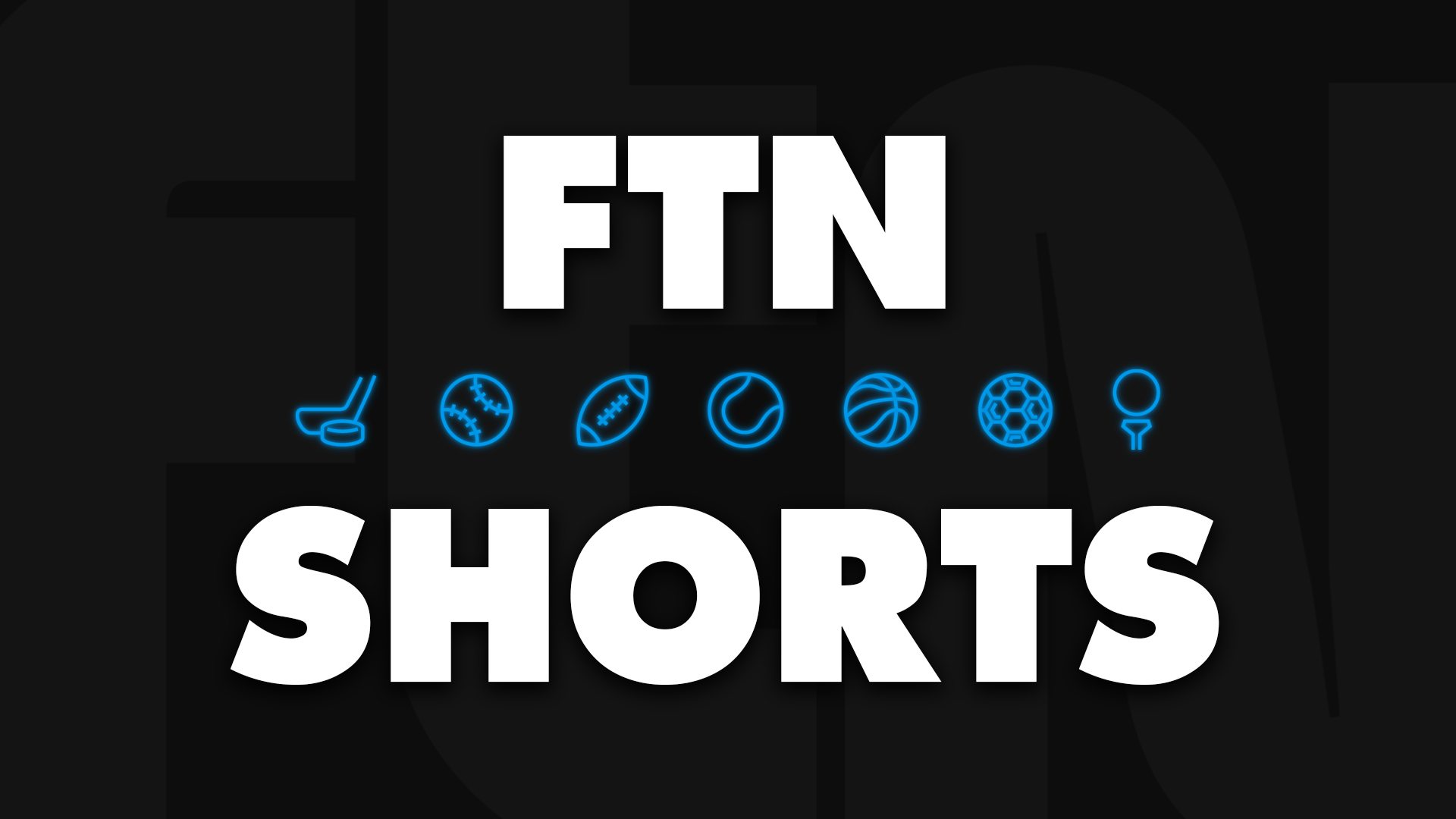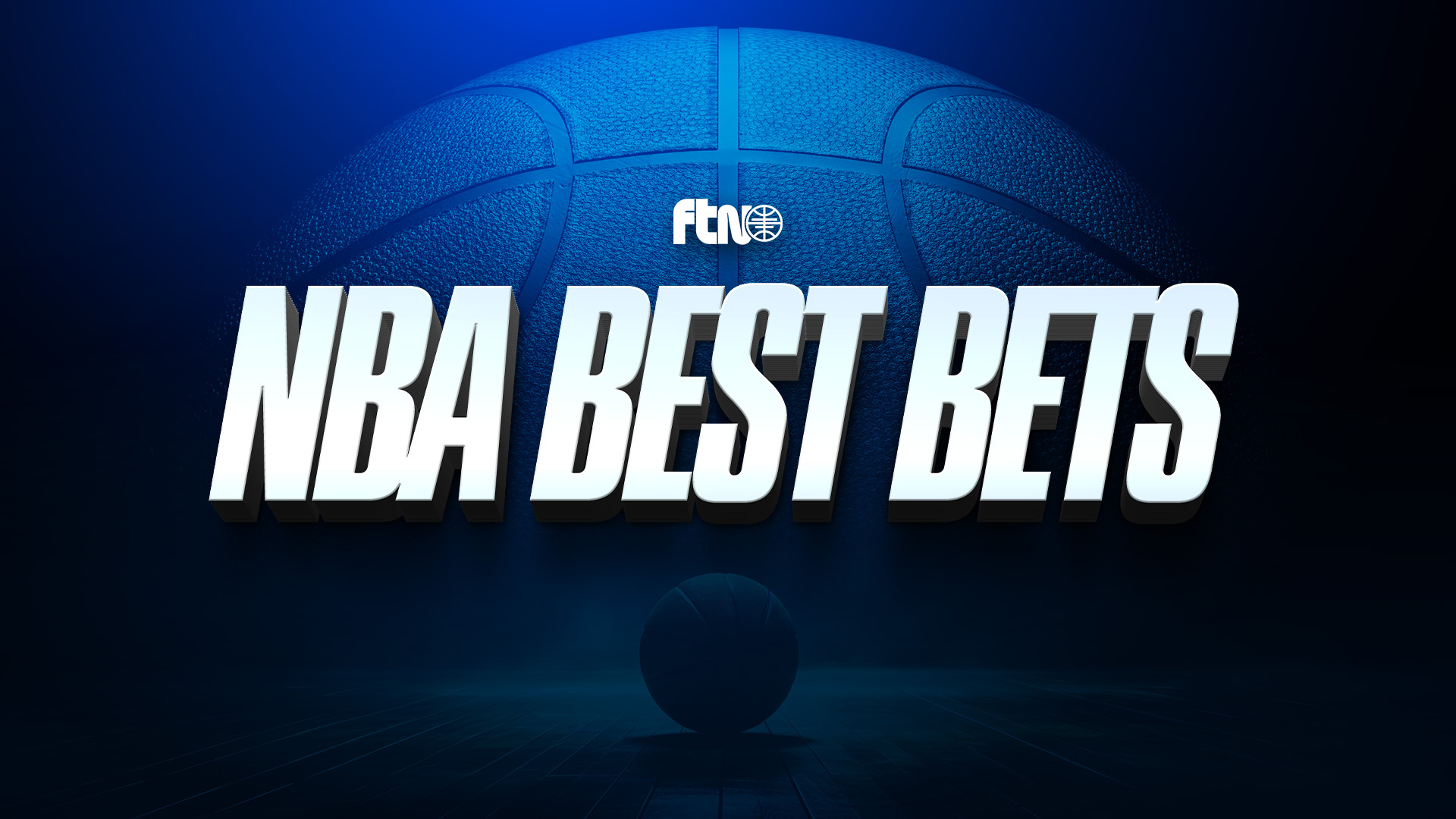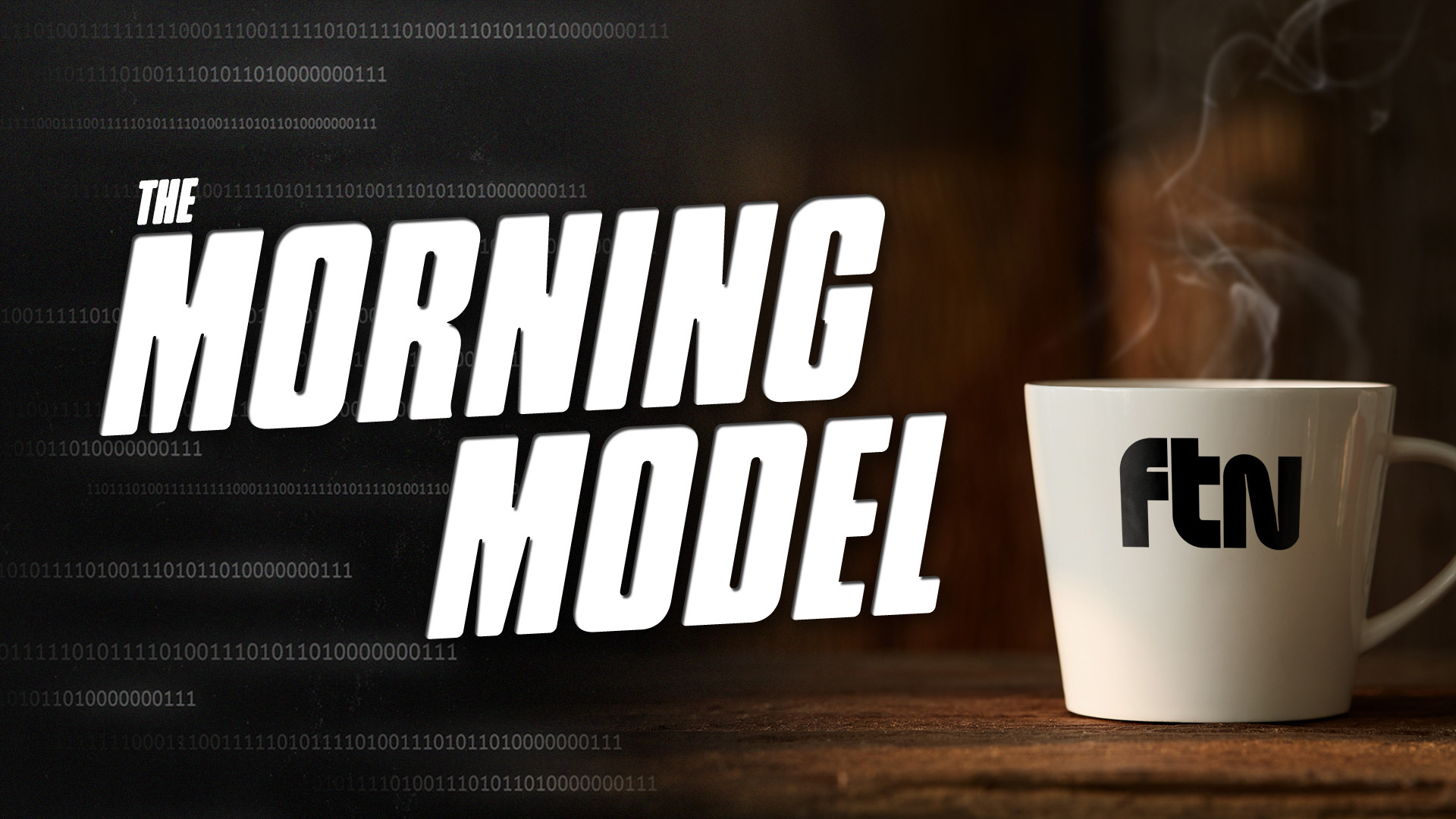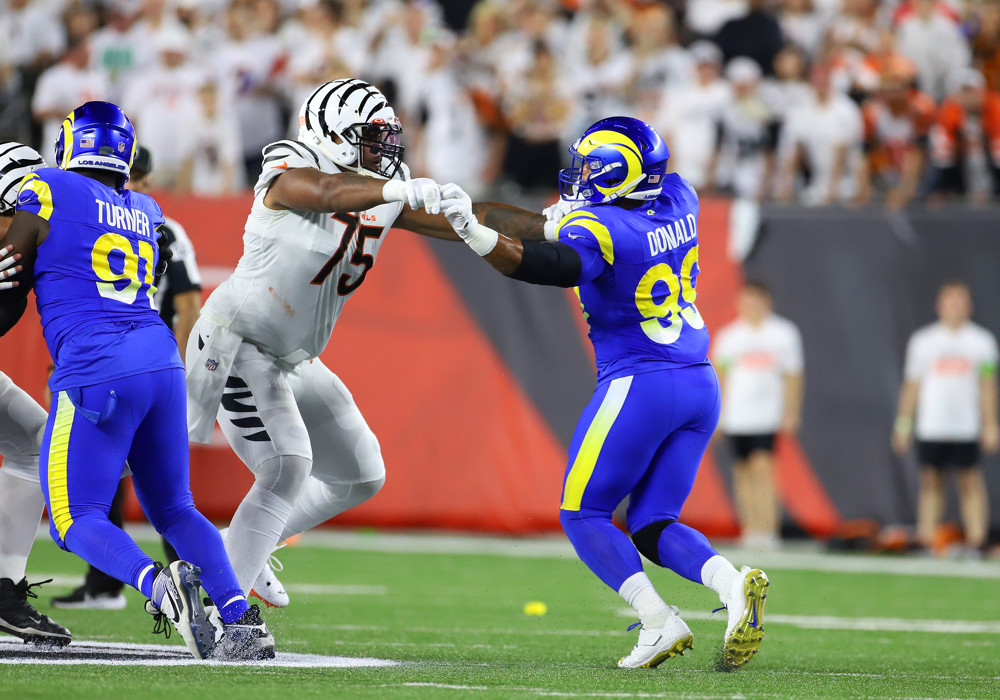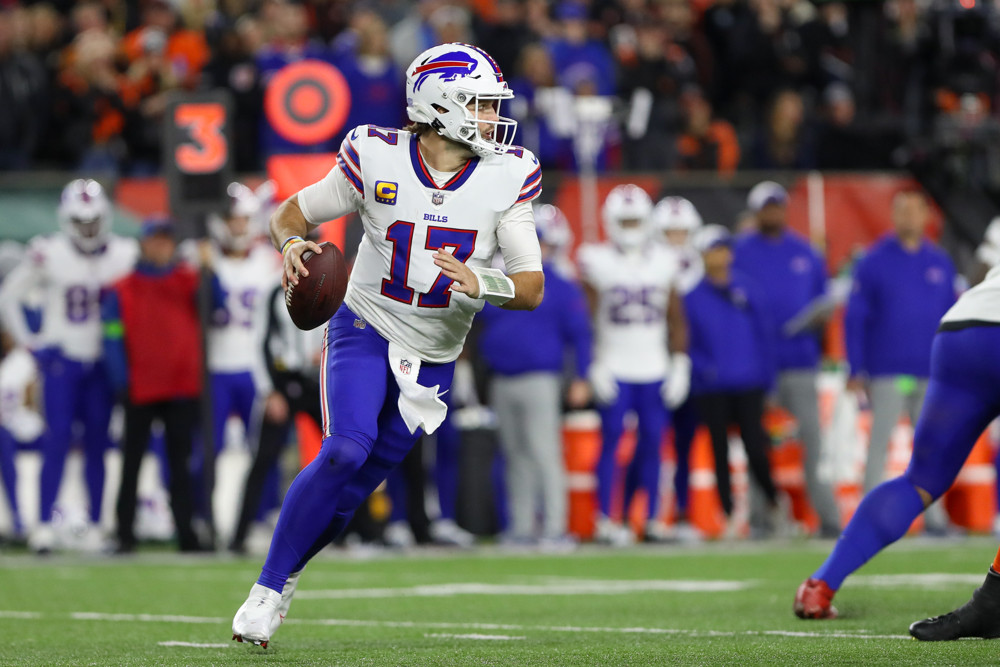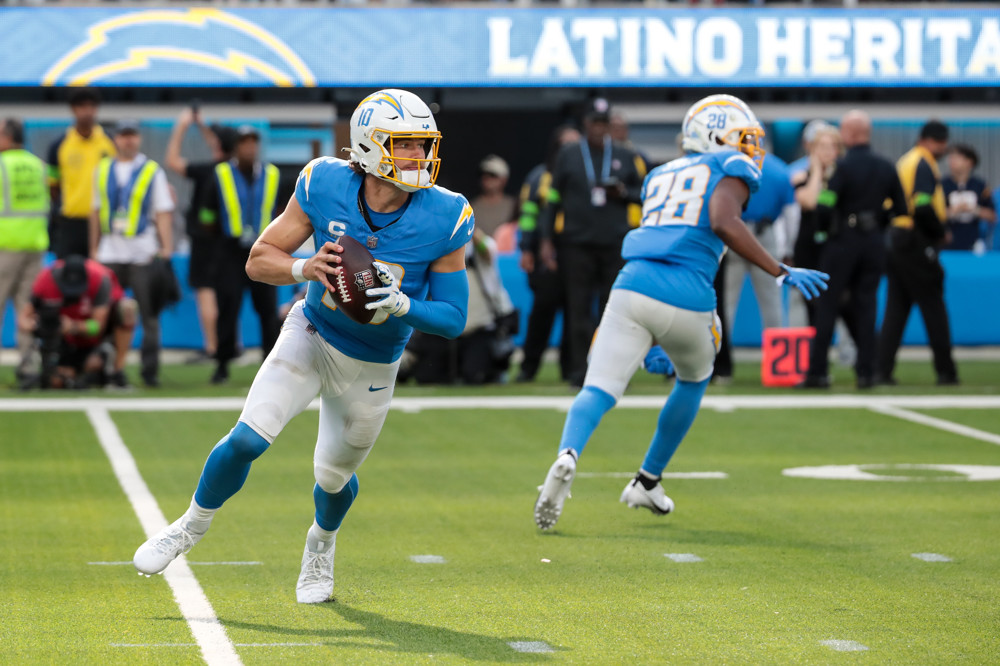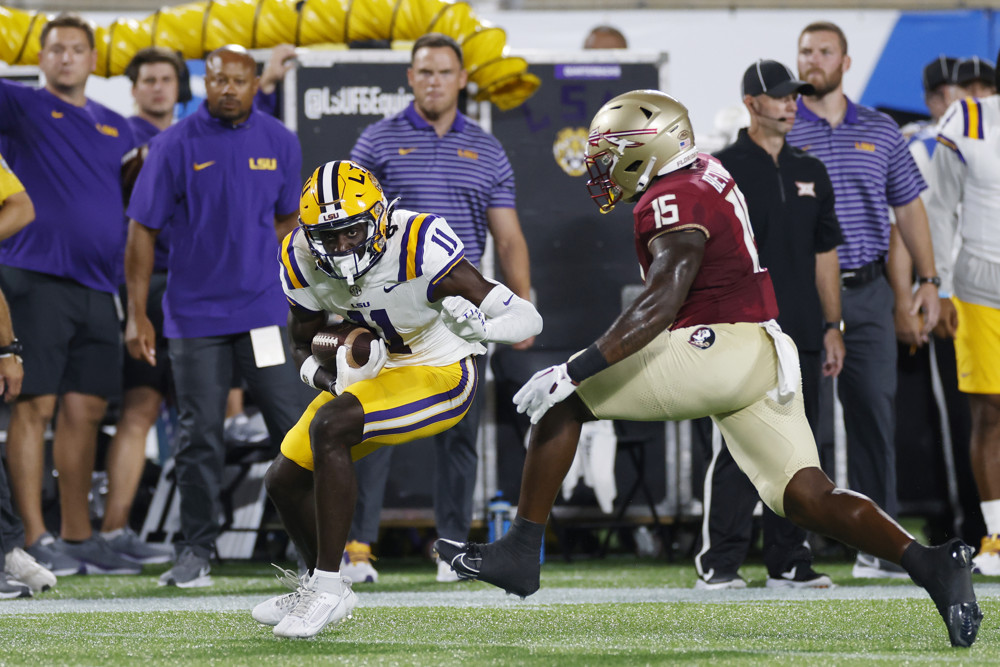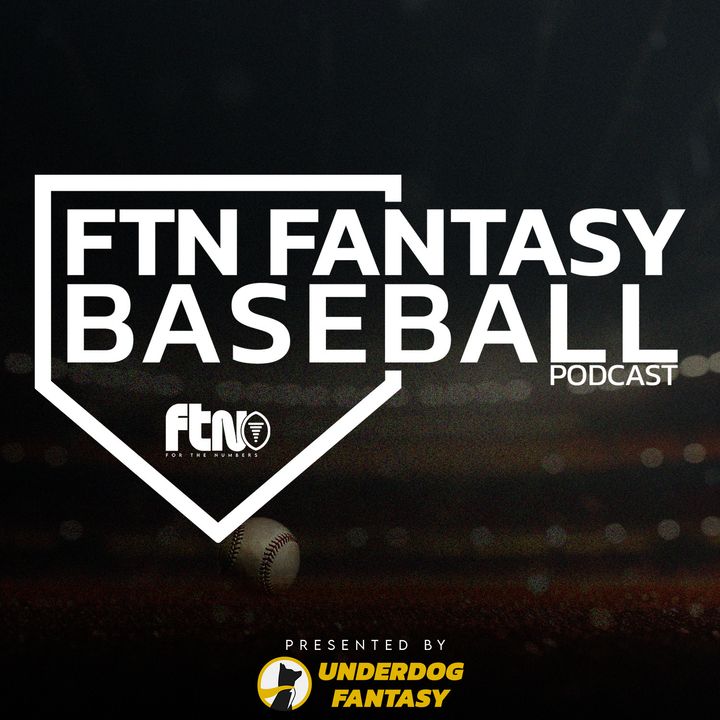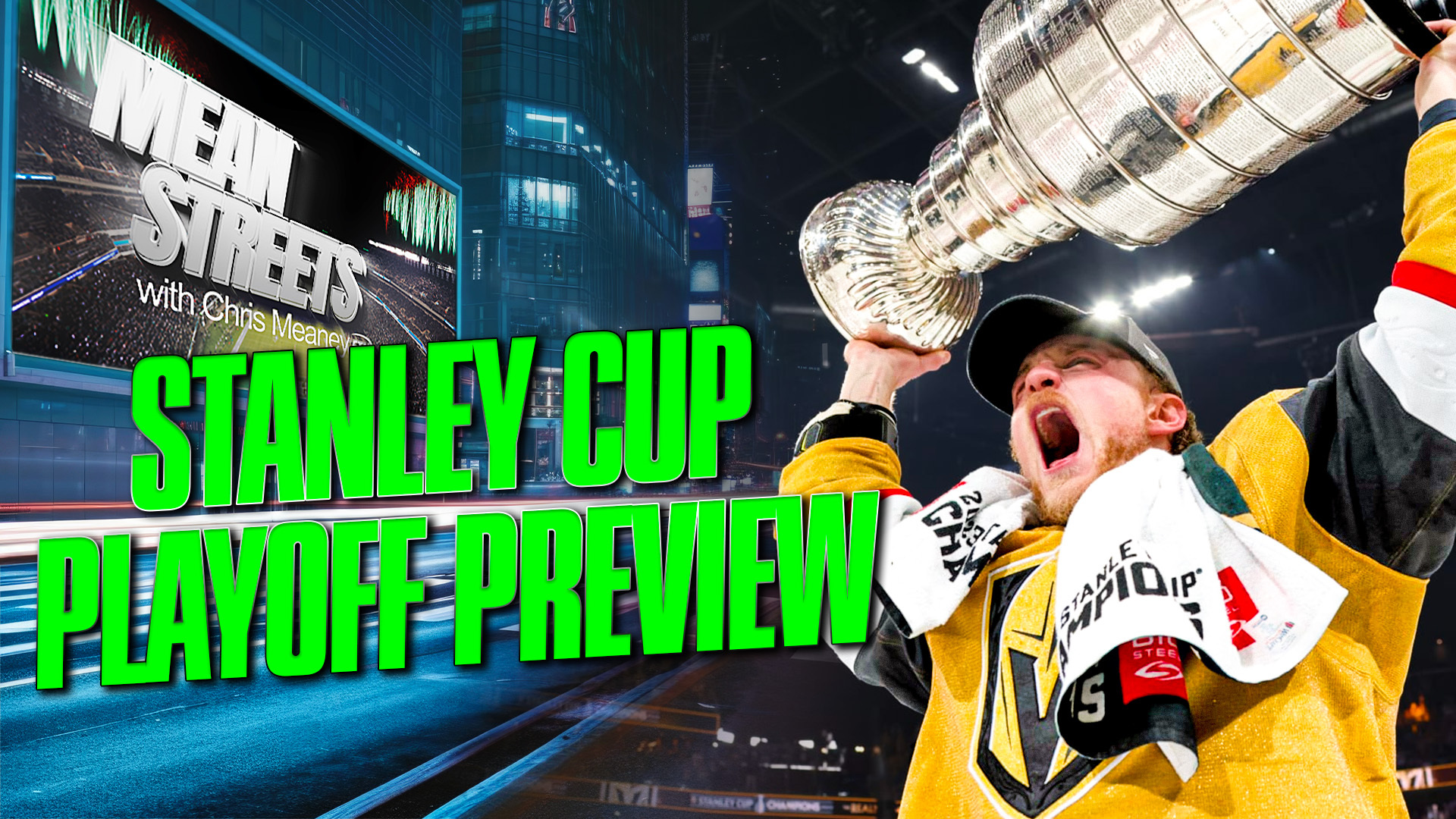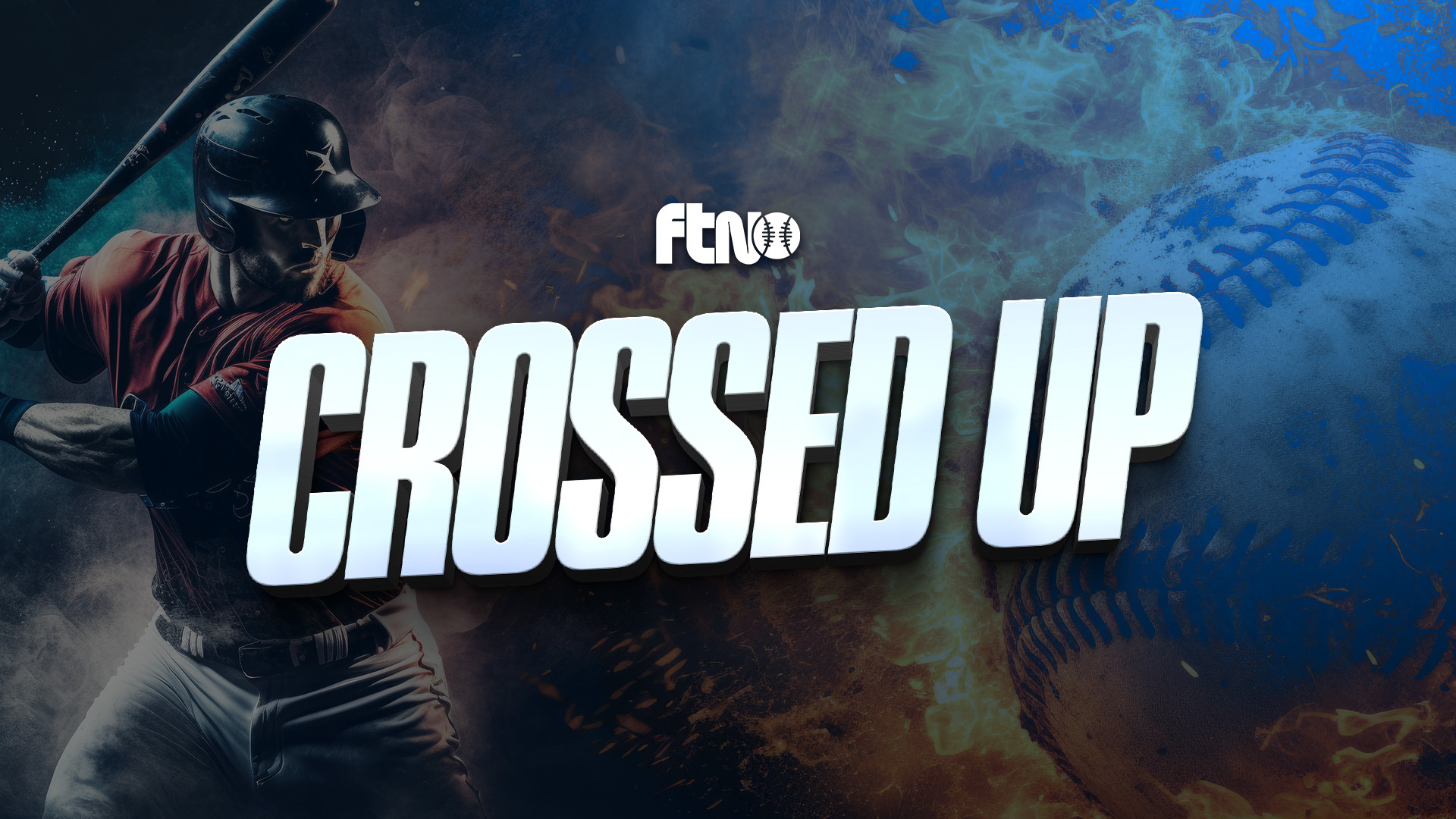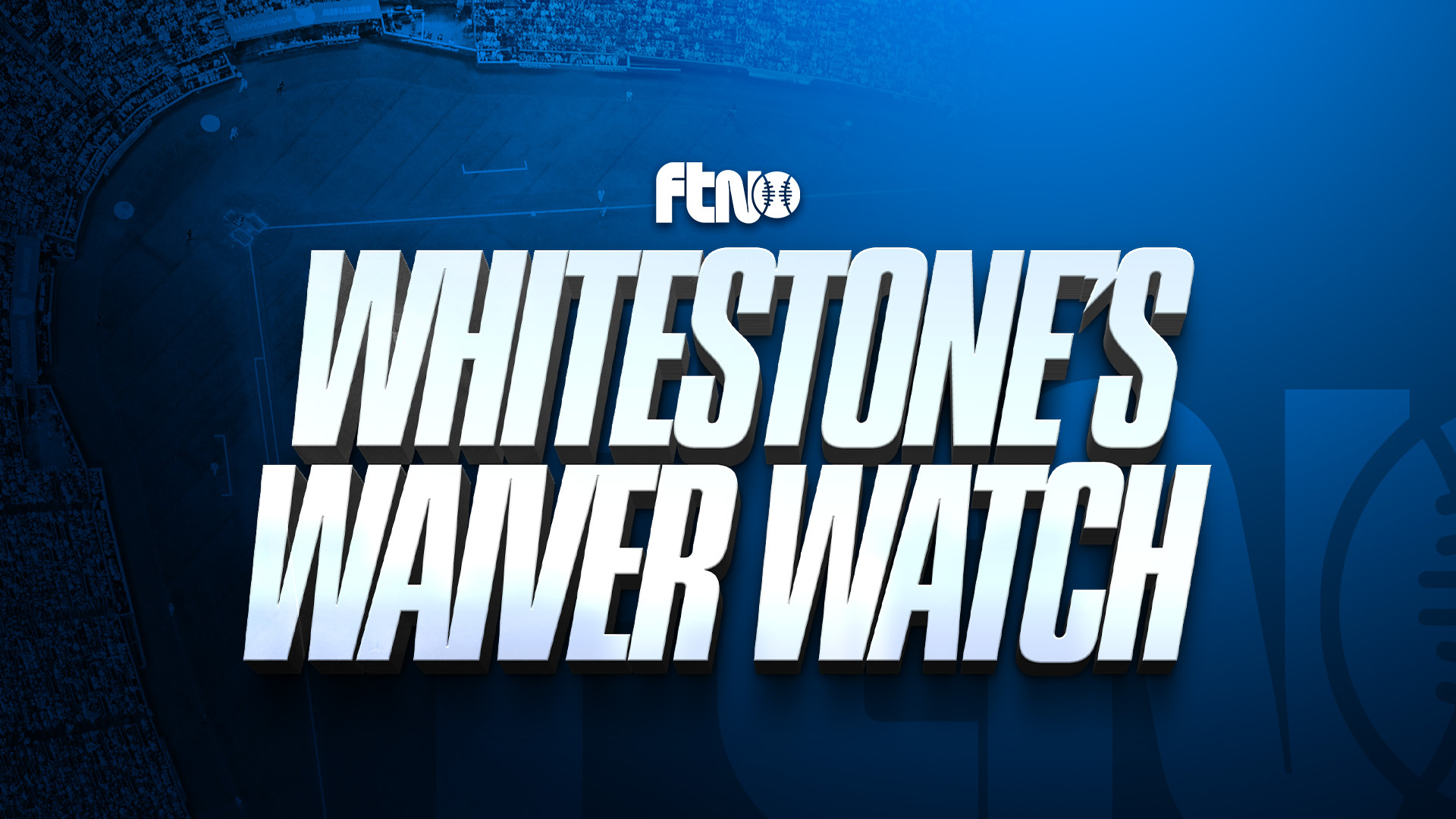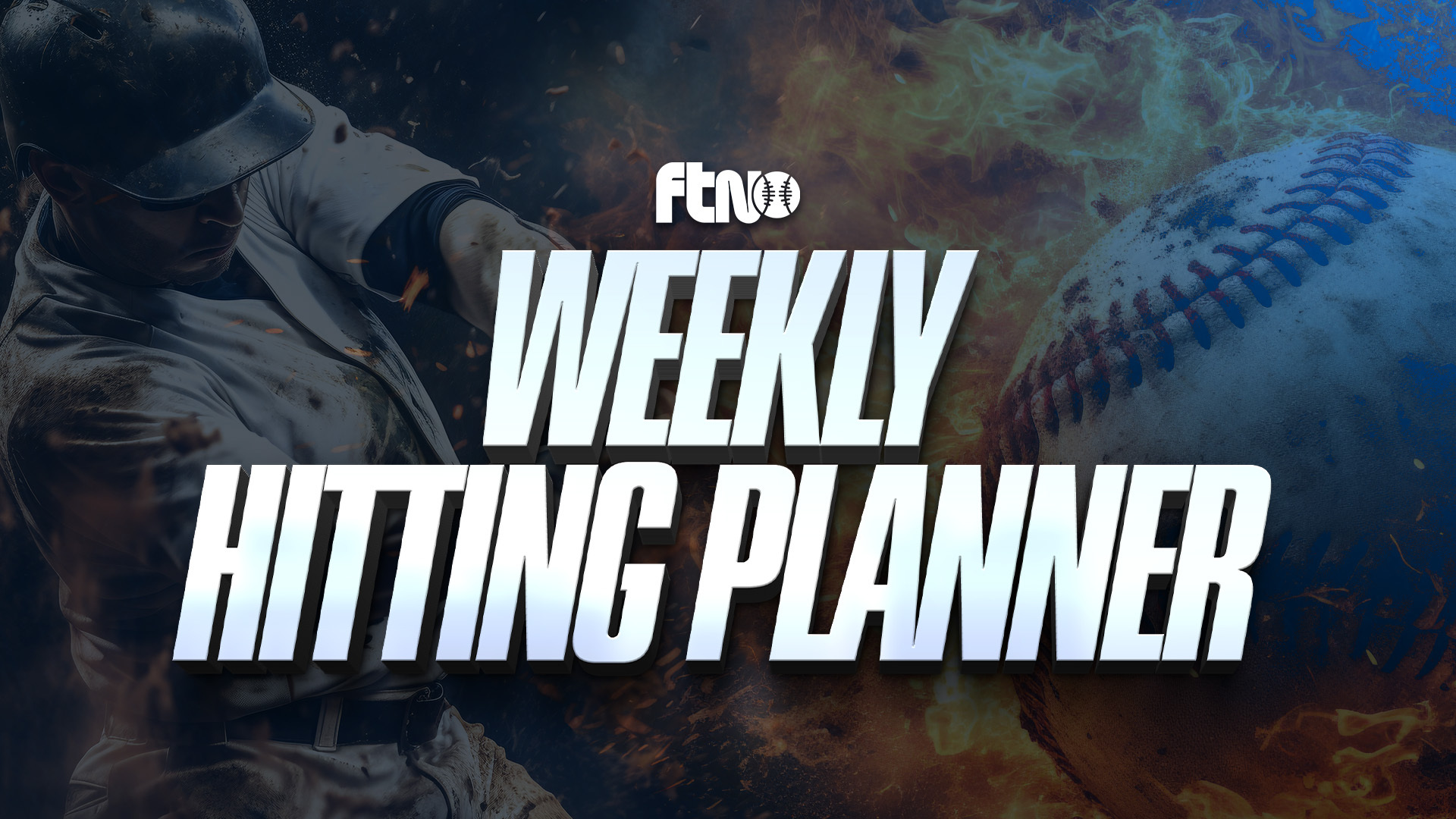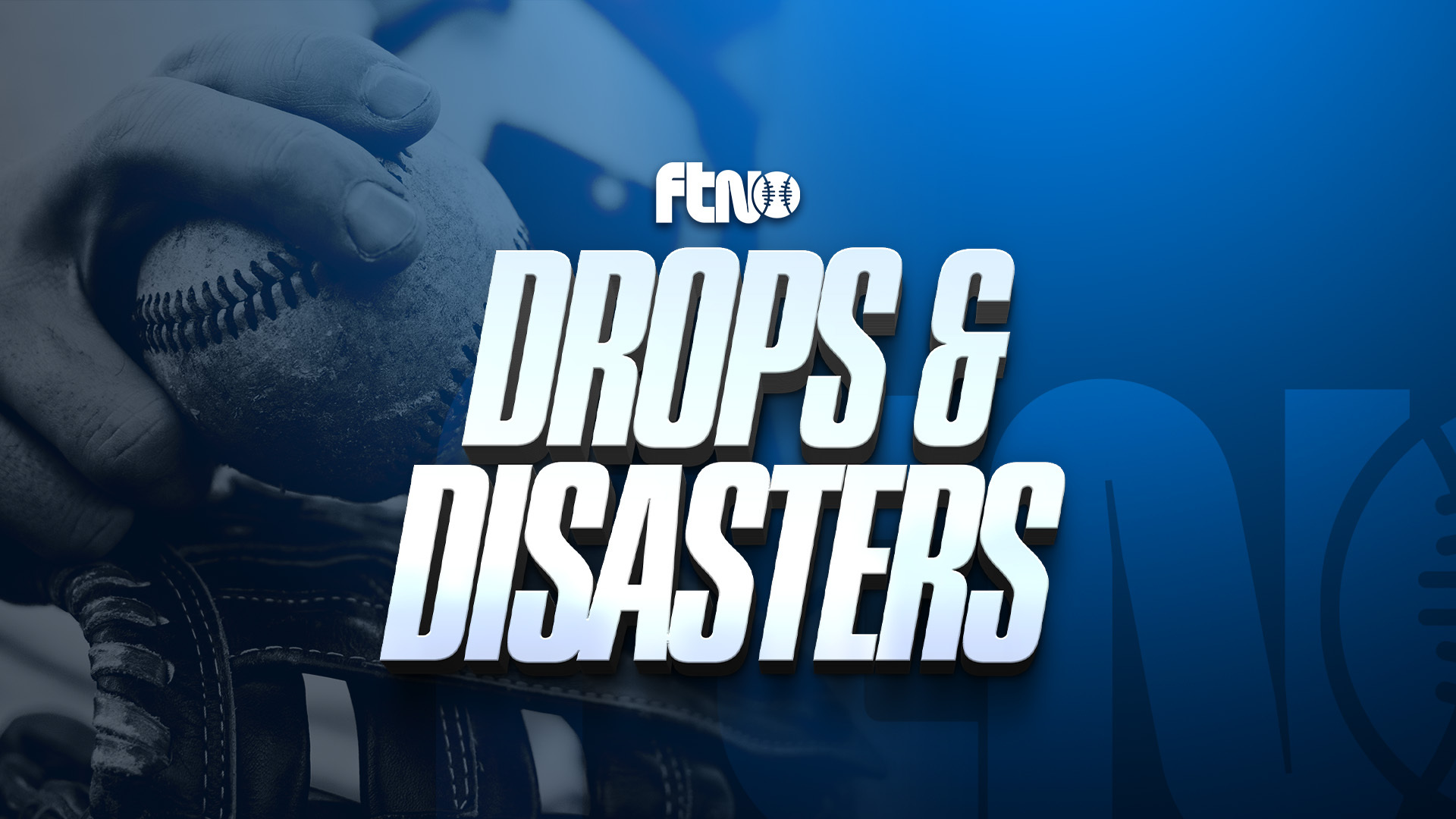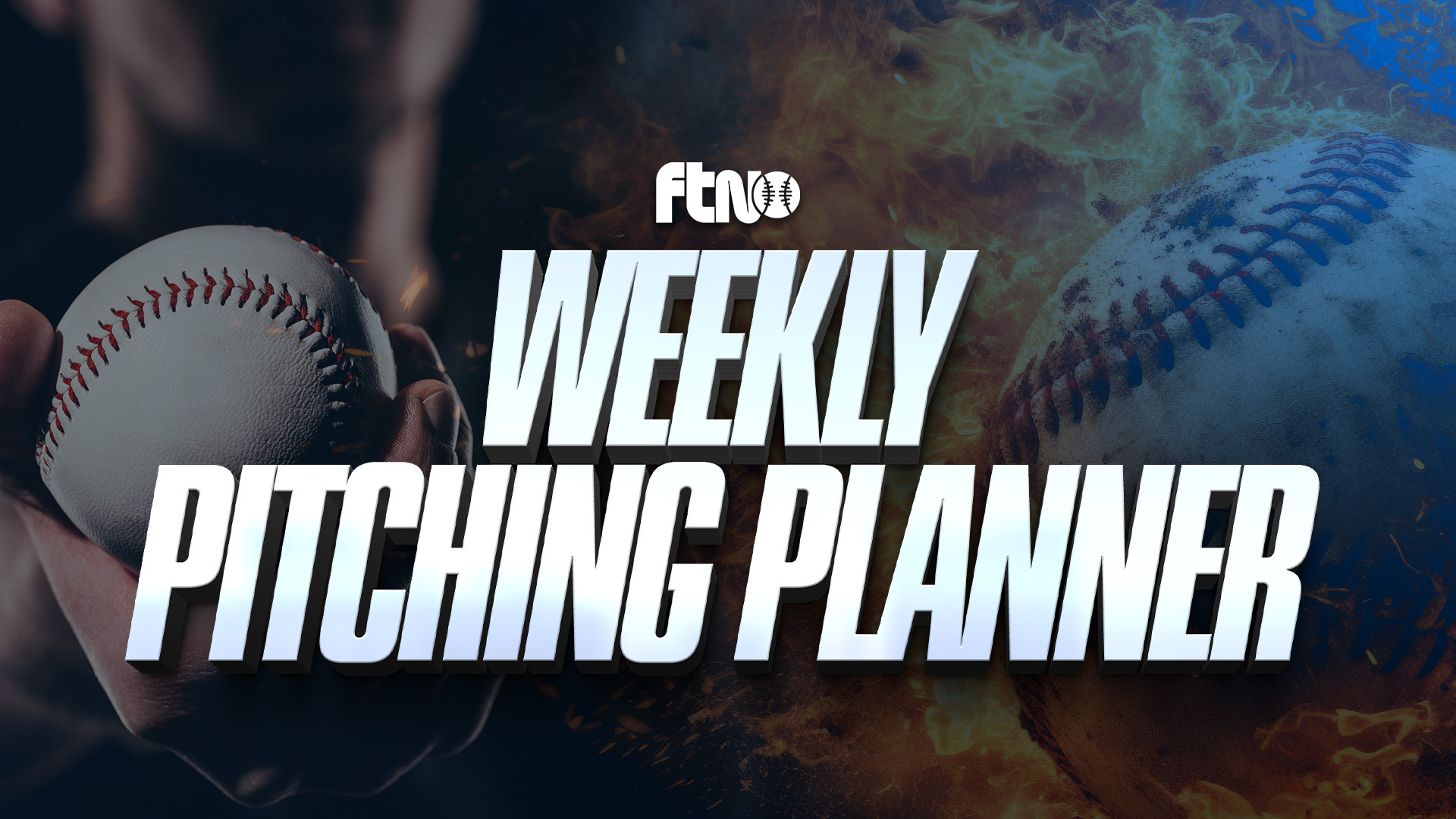
A funny thing happens in sports when you lose on the big stage.
Some players saunter off the field with their heads down. Others take out their frustration on the water cooler. Some wrap a towel around their face and sit in catatonic disbelief.
Then, there’s Stefon Diggs.
Wait! Hold up, isn’t this a fantasy baseball article? Bear with me…
Players like Diggs stare defeat in the face. They let it marinate. For a brief moment, that feeling consumes them. Then, they pack it away and use it as fuel.
Don’t believe me? Here’s Diggs following last year’s epic overtime loss to the Kansas City Chiefs in the AFC Divisional playoffs.
You see where this is going, don’t you? Last year, you thought you had the perfect fantasy baseball team. You crushed the draft. You studied the matchups. You collected all the double-dip pitchers.
ADP be damned, your team was stacked. Yet you came up just short.
That’s how I felt after my 12th-place overall finish in the NFBC $150 Online Auction Championship last season. Damn you, July Josh Hader. Damn you, second-half Yordan Alvarez.
Which brings me to this article. Maybe last year’s fantasy baseball season is still marinating in your mind. You want to get a head start on the rest of the industry. You want to burn the midnight oil while the rest of your competition is deciding whether to start Courtland Sutton or Jerry Jeudy in Week 15 of the NFL season.
So what’s the best way to quench that fantasy baseball thirst? The brand-new NFBC Gladiator. It’s the hottest new NFBC contest. It’s affordable, it’s unique and there’s a $7,500 grand prize.
Below, I’ll walk you through my thought process for NFBC Gladiator contests. But first, let’s break down the details.
NFBC Gladiator
- Entry Fee: $50
- Scoring: Rotisserie
- Draft: Snake
- Overall Prizes: $7,500 overall, Top 25 overall win
- League Prizes (15 teams): $250 for 1st, $125 for 2nd
- Max Entries in Contest: 1,500
- Max Entries Per User: 45
The unique thing about the NFBC Gladiator is there are no FAAB pickups, no trades and the roster you draft is the roster you play with the entire season. There’s also no bench, meaning every player you draft contributes to your season-long categorical total.
Note: I had success last season filling my NFBC lineup with stud hitters, two elite closers and punting SP altogether. I was confident in my ability to work FAAB, stream pitchers in elite matchups and utilize double-dip candidates. It worked. I finished near the top of all pitching categories and barely had to touch my hitters all season. It was the near-perfect formula. However, that won’t fly in the Gladiator. If you “punt” starting pitching, you’re stuck with those pitchers all season. Keep that in mind.
Roster Construction
A full roster looks like this:
- Catcher (2)
- First Baseman (1)
- Second Baseman (1)
- Shortstop (1)
- Third Baseman (1)
- Outfielder (5)
- Corner Infielder 1B/3B (1)
- Middle Infielder 2B/SS (1)
- Utility Player (1)
- Pitcher SP/RP (9)
The most difficult part of the Gladiator contest is dealing with injuries. If you lose a player to a season-ending injury in April, your 23-man roster is now down to a 22-man roster.
If you lose another player, it’s down to 21.
It’s something to think about as your mouse hovers over a player like Byron Buxton, who might be pulling a hamstring as we speak.
So how should we approach these Gladiator drafts? Should elite closers go in the first round? Should you load up on starting pitching early, or go hitter-heavy?
Let’s dive in.
Gladiator Early Rounds
This might sound familiar. The early rounds are where you build the foundation of your roster, just like you’d build the foundation for a house. I want players who can contribute in most (if not all) categories and have secure, unquestioned playing time. A clean injury history is a bonus.
But don’t most early-round players fit that criteria? How do we nail our early-round picks when every player on the board is a stud in some capacity?
I like to use psychology and recency bias to my advantage.
Fantasy sports is similar to the stock market in that people are much too reactionary. We overreact to last year’s production instead of trying to predict “what’s most likely to happen next?”
It’s why the top defense in fantasy football is always the top defense off the board the following year, despite no evidence to support that trend (this year’s Cowboys would become the first team to repeat as No. 1 since 2000).
Which leads me to this bold stance…
Don’t reach on a closer
I’m avoiding closers in the first round and early second. Per current NFBC ADP, Edwin Díaz and Emmanuel Clase are already going in the top 16. That’s essentially two closers going in the first round of Gladiator drafts.
Clase led MLB with 42 saves last season for the Cleveland Guardians. He posted a career-best 0.73 WHIP alongside a pristine 1.36 ERA. That’s the good news.
The not-so-good news?
His 9.54 K/9 was rather pedestrian for a closer. Only Scott Barlow (9.32), Clay Holmes (9.19), Jorge López (9.13) and Gregory Soto (8.95) ranked below him. Some slight regression in the BABIP department, and Clase could be in a bit of trouble at current ADP.
There should be ample save opportunities in Cleveland, but it isn’t necessarily the top spot on the board. Predicting who will finish with the most saves in a given season is not the business I want to be in.
I understand the thought process. Saves are hard to come by. If you lock down a pair of elite relievers early, you will have an advantage in saves over the competition. But what about the other categories? And how much of an edge are you really getting? Saves are one out of 10 total categories. You’ll get some ERA/WHIP help, but starters can help with that while producing more in the K department.
In the early rounds, elite hitting can produce in up to five categories. Elite starting pitchers can contribute up to four. Closers are mostly maxed out at three. I’d rather spend that precious early-round capital on hitters/starting pitching. Build the foundation. If you’re near the bottom of the standings in saves, you can make up the difference elsewhere.
There are ways to attack potential closers in the later rounds (we’ll get to that later).
So let’s recap. Does it feel safe to snag a closer like Clase with a defined role who led baseball in saves last season? Sure. But is it too reactionary? I believe so.
Clase is still the guy for now. But paying a first-round price for a player who is reliant on situational managing and the scoreboard is too risky for my taste. If he busts, you could be looking at a first-round selection that hampers your roster and puts you behind the 8-ball in other precious categories.
So who should we target early?
I prefer elite, multi-category contributors like Julio Rodríguez, José Ramírez, Kyle Tucker or Juan Soto. That group provides stable batting averages (with potential for improvement this season), power, speed, runs and RBI.
They have remained relatively healthy and are at or near their prime years. In the case of Soto, I expect some positive regression after a career-low .249 BABIP last season.
Odds are slim any of those players will completely bust. And they’ll be in your lineup every day.
Now What?
Once you progress through the draft, I like to target certain categories or positions.
For this exercise, let’s say you drafted Julio Rodríguez in Round 1. That’s one of five outfielders on your roster and a solid contributor in all five categories.
Now is the time to address starting pitching. If you wait another round, the top-end starters will begin to dry up. We already know people are drafting closers early.
I want to target high-strikeout producers on playoff-contending teams. Looking at last year’s ratios won’t impact my decision-making as much, since it’s been proven that BABIP for pitchers fluctuates year-to-year.
Gerrit Cole, Corbin Burnes and Dylan Cease are prime SP targets in the next round or two. They’ve shown an ability to stay healthy and pitch a ton of innings. They will be near the top of the leaderboard in strikeouts (and hopefully wins).
While most people have gone hitter and reliever early (seven of the top-12 ADP pitchers are relievers), you’ve grabbed a potential five-category hitter and a starting pitcher who will contribute well in four categories.
This type of start checks both my boxes. I’ve built a solid foundation, and I’ve addressed two separate positions that produce in multiple categories at a high level.
Note: This strategy isn’t an end-all-be-all. If you are one of those people who want an elite closer early, that’s fine. You can follow that up with the best-available SP or the best-available hitter at a scarce position and still have a strong foundation. It’s just not the route I’ll take.
Assessing Value
As you move through the rest of the draft, an old adage comes into play: “Take what the draft gives you.”
An elite catcher on your board is still available in Round 5? Go ahead and snag them. Grabbing Alejandro Kirk in almost every league last season was a game-changer for me at a weak position.
Perhaps one of your top-projected relievers has slipped through the cracks? Grab ‘em. While Diaz and Clase are off the board, you can hope to get similar production from someone like Raisel Iglesias several rounds later. I’m not telling you that Iglesias will outproduce Clase or Diaz. But is it possible? Steamer currently has Clase projected for 35 saves, Diaz for 33 and Iglesias 30. That’s not a huge margin for error. If Iglesias matches or exceeds that production in the fourth round, you’ve zigged while others zagged.
Identifying the Top Value
The best way to assure yourself value is to create your own draft tiers. Using tiers helps you identify which positions are deep and which positions drop off significantly at a certain point.
Again, it goes back to creating a solid foundation. If you stack too many Tier 1-2 players at one position, you’re going to be weak elsewhere. You want to create balance while also maintaining upside. Tiers can help you do that.
Another mantra I live by is “don’t obsess over ADP.” “No, I can’t draft Player A in this round. That’s a full round ahead of ADP.” Well, what if Player A is the last Tier 3 player on your board, and Tier 4 is filled with platoon players and aging former stars?
It’s all about identifying value, especially in leagues with a top-heavy overall prize like the Gladiator.
Later Rounds
These rounds are where you fill holes in your lineup or take a gamble on high-upside players who may have fallen out of favor (cough, cough, Cody Bellinger).
The best thing to do is find a set of projections you trust (I used FTNFantasy’s projections last year and finished 12th overall, just saying!), create a baseline that you want to hit in each given category and evaluate it as you go through the draft.
“Woah, there are still five rounds left and I’m projected to exceed my home run baseline. But my projected batting average is slacking.” Can I interest you in Luis Arraez?
Maybe you passed up too many closers in the early-mid rounds. FTN has a great Closer Chart that can help you identify bullpen roles that may be shifting or shaky. Find a situation where the current closer doesn’t have a firm grasp on the role. For example, if you’re desperate for a closer in the late rounds, Seranthony Domínguez’s current ADP is 177 and José Alvarado’s is 341.
Dominguez likely wins the role in Philadelphia, but it’s not unfathomable to expect a potential committee or Alvarado taking the job outright should something happen to Dominguez.
That’s just an example. There are other potential closers sitting deep in the depths of ADP hell like Jimmy Herget (318), Brandon Hughes (337) and Joe Mantiply (345). I’m not saying these guys will save 20 games, but they are great late-round dart throws for closer-needy squads.
It’s also a great way to create leverage over the field. If you hit on 1-2 of these late-round closers, and they win the job (like Félix Bautista last season), you’ll compete in the saves category without using top draft capital to do so.
If you’re feeling secure in the mid-late rounds, don’t hesitate to also draft a player like Bryce Harper (157 ADP) or Adalberto Mondesi (286 ADP). Sure, you’ll take zeros for a while, but they could be a shot in the arm midway through the season that puts you over the top (look at what DeAndre Hopkins has done in fantasy football for those who took the discount).
If you’re going to compete for the overall prize, there has to be some risk-taking involved – especially this early in the offseason. The mid-late rounds are the sweet spot for lottery-ticket players.
Remember the three steps:
- Build the foundation
- Fill in gaps
- Sprinkle in some risks
There are many ways to approach Gladiator drafts. That’s the strategy I’d deploy.
Final Thoughts
There’s no one-size-fits-all approach. This is just my strategy. It doesn’t have to be yours. I’m very thankful to be a part of FTN’s MLB squad this year:
And remember, the team here at FTN is here to make sure opponents are staring up at your confetti this year.
And now, some bonus tips from FTN’s Vlad Sedler:
Vlad’s Glads
Below is a list of Vlad Sedler’s targets and fades in relation to current ADP, specific to the no-bench Gladiator format:
Targets
| Pos. | Name | ADP |
| C | Keibert Ruiz | 180 |
| Joey Bart | 307 | |
| CI | Matt Olson | 52 |
| Jose Miranda | 166 | |
| Joey Meneses | 202 | |
| Spencer Torkelson | 309 | |
| MI | Marcus Semien | 37 |
| Wander Franco | 101 | |
| CJ Abrams | 243 | |
| OF | Eloy Jiménez | 81 |
| Taylor Ward | 142 | |
| Lars Nootbaar | 192 | |
| Michael Conforto | 228 | |
| Trey Mancini | 266 | |
| P | Raisel Iglesias | 59 |
| Luis Castillo | 71 | |
| George Kirby | 102 | |
| Drew Rasmussen | 167 | |
| Bailey Ober | 250 | |
| Ranger Suárez | 283 |
Fades
| Pos. | Name | ADP |
| C | Daulton Varsho | 38 |
| Sean Murphy | 129 | |
| CI | Gunnar Henderson | 94 |
| Max Muncy | 156 | |
| Anthony Rizzo | 161 | |
| Justin Turner | 308 | |
| MI | DJ LeMahieu | 260 |
| Thairo Estrada | 180 | |
| Adalberto Mondesi | 284 | |
| OF | Fernando Tatis Jr. | 23 |
| Michael Harris | 31 | |
| Corbin Carroll | 70 | |
| Byron Buxton | 126 | |
| Jake McCarthy | 127 | |
| P | Camilo Doval | 58 |
| David Bednar | 92 | |
| Lance Lynn | 136 | |
| José Leclerc | 180 | |
| Chris Sale | 188 | |
| Michael Kopech | 295 |

